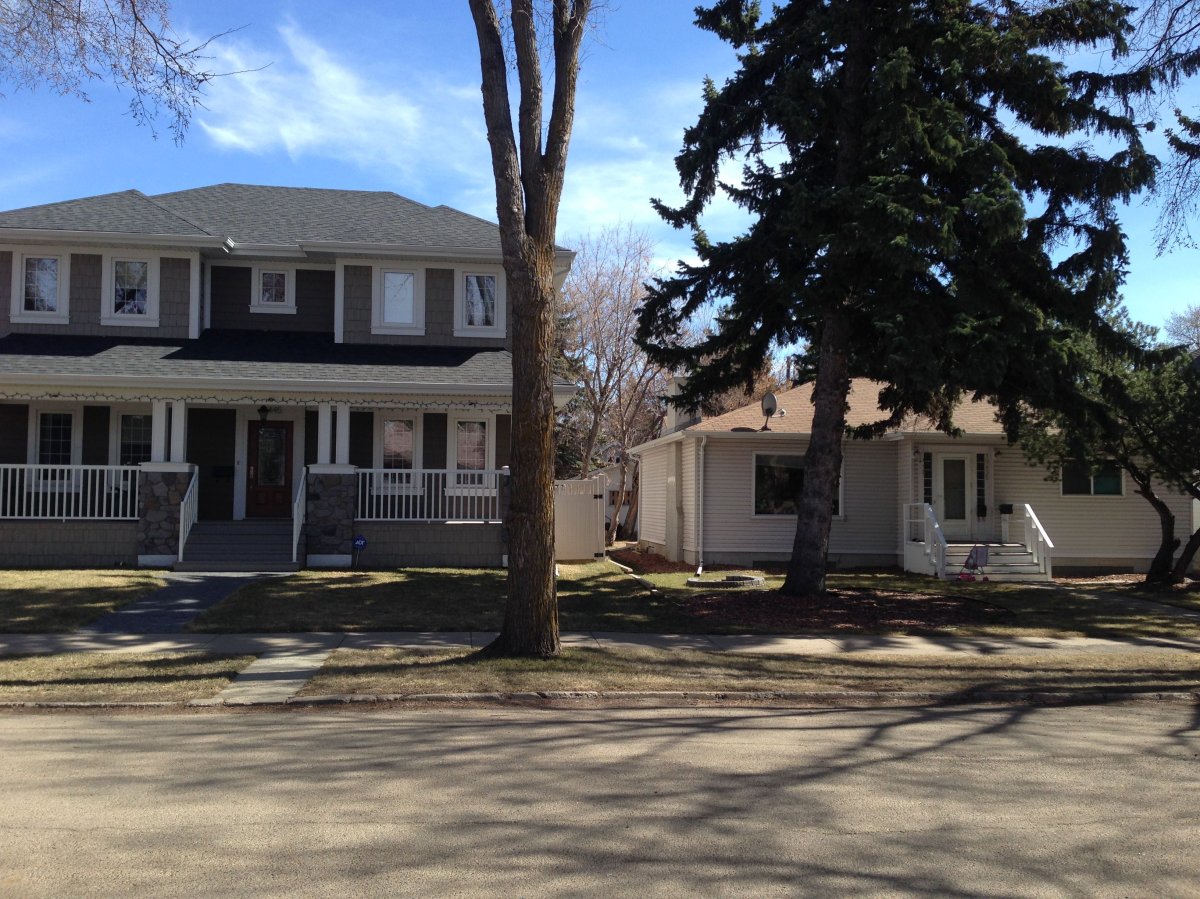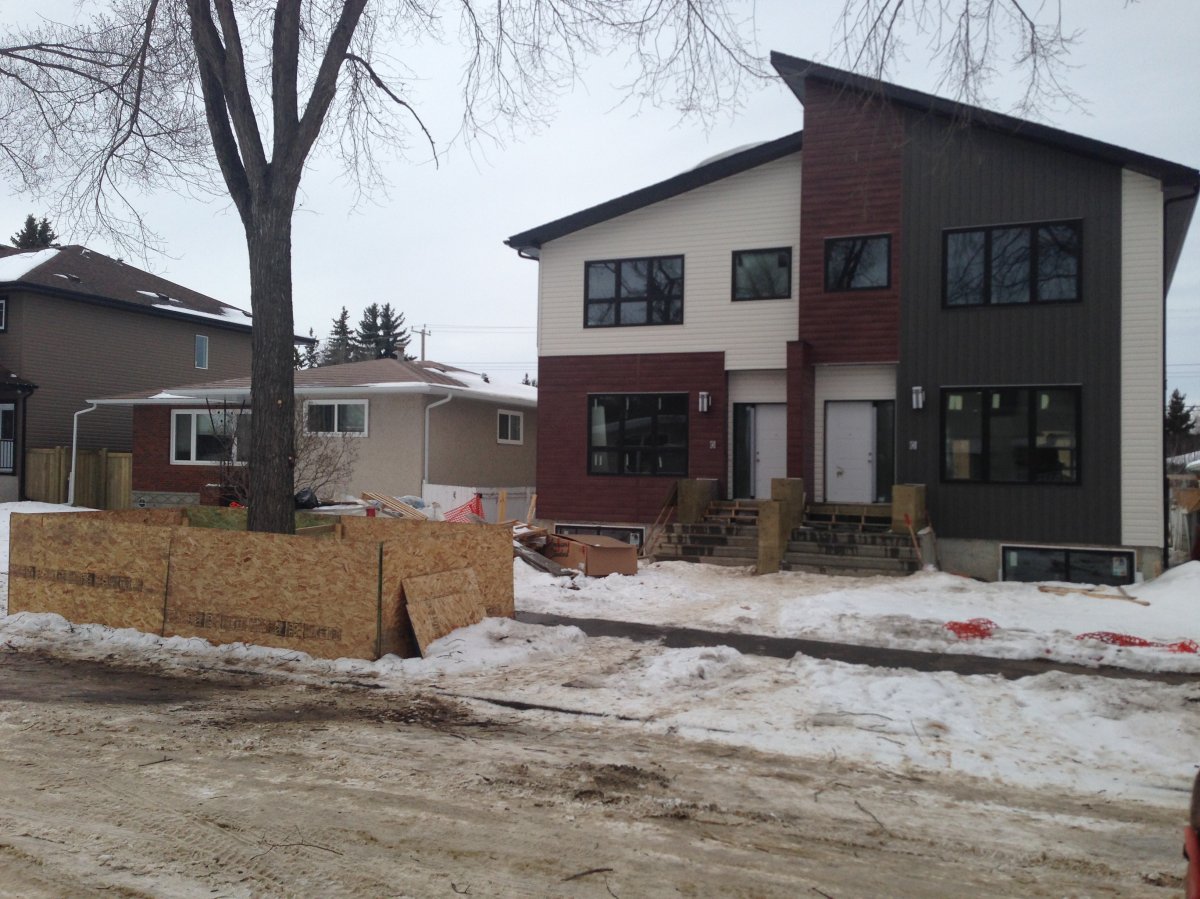A year ago, complaints about shoddy tradesmanship and bad infill practices prompted the City of Edmonton to put together an inspection team to do site visits. The city said it’s paying off, with the enforcement team making headway on a long list of properties with building permits dating back to last year.

READ MORE: By the numbers: 2 years into Edmonton’s infill housing process
“We haven’t been seeing too many trends,” said Livia Balone, the city’s director of development and zoning services.
“We have a few that have had a number of infractions, but they perhaps have been on different sites or with different sub-trades. We’ve only been doing inspections since last July. We haven’t seen alarming numbers with certain builders in the city.”
READ MORE: Edmonton launches new infill website because of ‘sensitivities’ involved in projects
The approach they’ve taken so far is to fix problems through education, not enforcement. On 557 inspections — which is 41 percent of the roughly 1,200 locations on file — 189 of them have been because of complaints phoned in by the neighbours, while 227 inspections saw staff being proactive.
“It was only about half and half,” observed Bev Zubot with the Edmonton Federation of Community Leagues (EFCL), who said we’ll never see the day when inspectors are no longer needed.
“Half of the inspections came because of complaints. So we still need the neighbors out there to have an eye on things.”
The report detailing the initial year of inspections said there were 815 infill-related infractions. Of those, 493 resulted in verbal warnings, 205 in written notices putting the property or developer on warning, 114 tickets handed out, and only three Municipal Government Act Orders.
READ MORE: What are they building? Development permit signs mandatory in Edmonton
The largest percentage of the tickets were for violations such as blocking the roadway or sidewalk, or driving equipment onto locations they shouldn’t.

WATCH ABOVE: The City of Edmonton is planning to refine the rules when it comes to building new homes alongside the old. Vinesh Pratap filed this story on the infill discussion in January 2017.
The chairman of the city’s urban planning committee, Coun. Andrew Knack, said the move to transfer some money within the department to get some clerical help in the office should help reach next year’s goal of having 60 per cent of sites inspected in person, up from the 41 per cent this year.
“That may allow them to actually work their way towards 100 per cent in the next year or two anyways, because we’ll just see more general compliance, so I’d hate to rush into spending ten times as much today when we might be able to achieve that with clerical support.”
The move would allow inspectors to spend more time visiting work sites and less time back at the computer doing paperwork.
“Potentially, as we see progress being made in the coming years, there may be less and less infractions because the bad builders are going to realize they’re going to get caught,” Knack said.
READ MORE: City looking at new ways to fast-track infill in older areas of Edmonton
The big problem the EFCL has highlighted is excavation for foundations. Quite often they’re dug straight down in the four feet between the building and the edge of the property, or deeper — straight down five feet. That might be too close or too deep for the property next door.
“If you dig a vertical face, close to the property line, that excavation is not going to be stable. The ground is going to move and you’re going to lose the fence,” said Stephen Poole, a retired engineer who’s consulting with the EFCL. Other damage can be collapsed sidewalks in the neighbors yard, or in rare occasions, cracks to the foundation in the next-door property.
READ MORE: Edmonton city council seeks power to control tree removal on private properties
A city report detailing those problems is coming in June.


Comments